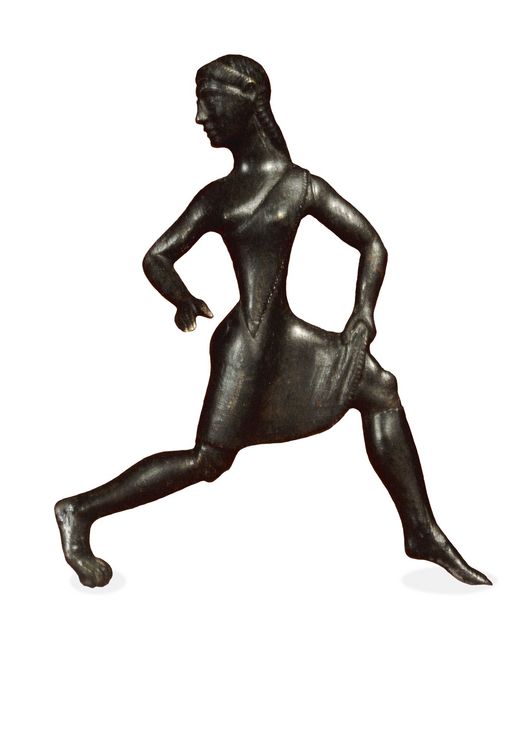Ancient Greek Girl Athlete

Annotation
This unusual bronze figurine of a female runner was possibly made in or near Sparta, Greece, between 520-500 BCE. Ancient Sparta was the only Greek city-state that provided girls with public schooling including physical education. Girls were praised for their swiftness and likened to prized racehorses in choral songs (called partheneia) sung by girls' choruses in Sparta and elsewhere. Spartan "virgins" also participated in the Heraea, games held at Olympia every four years in honor of the goddess Hera. Winners received olive crowns, shared a cow they sacrificed to Hera, and were allowed to dedicate statues of themselves engraved with their names. The bronze rivet on her right foot suggests that this figurine was possibly attached to a vessel or utensil at one time.
In what ways does this girl's body reveal that she was athletic? What might her clothing tell us about notions of girlhood in Sparta? Female athletes wore a short off-the-shoulder tunic like the one donned by this runner. It more closely resembled the semi-nude bare-breasted style of the legendary Amazons than the ornate and heavily draped Korai "maidens" elsewhere in Greece. What might account for the varieties of girlhoods throughout the Greek world?
Credits
Statue of Female Athlete (sixth century B.C.E). Annotated by Cynthia Jones and David D. Leitao.